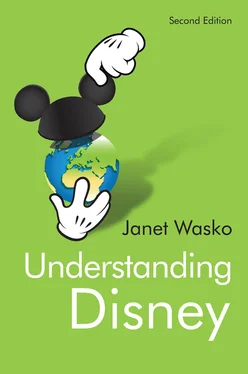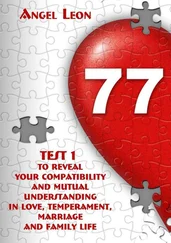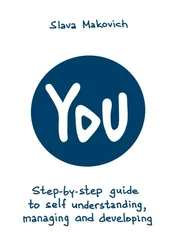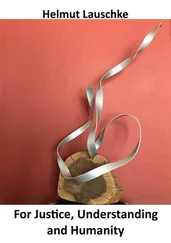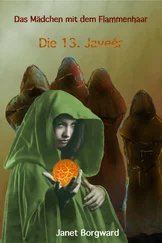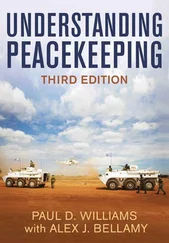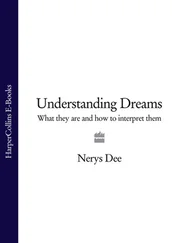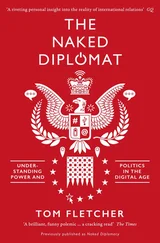Janet Wasko - Understanding Disney
Здесь есть возможность читать онлайн «Janet Wasko - Understanding Disney» — ознакомительный отрывок электронной книги совершенно бесплатно, а после прочтения отрывка купить полную версию. В некоторых случаях можно слушать аудио, скачать через торрент в формате fb2 и присутствует краткое содержание. Жанр: unrecognised, на английском языке. Описание произведения, (предисловие) а так же отзывы посетителей доступны на портале библиотеки ЛибКат.
- Название:Understanding Disney
- Автор:
- Жанр:
- Год:неизвестен
- ISBN:нет данных
- Рейтинг книги:4 / 5. Голосов: 1
-
Избранное:Добавить в избранное
- Отзывы:
-
Ваша оценка:
- 80
- 1
- 2
- 3
- 4
- 5
Understanding Disney: краткое содержание, описание и аннотация
Предлагаем к чтению аннотацию, описание, краткое содержание или предисловие (зависит от того, что написал сам автор книги «Understanding Disney»). Если вы не нашли необходимую информацию о книге — напишите в комментариях, мы постараемся отыскать её.
Understanding Disney — читать онлайн ознакомительный отрывок
Ниже представлен текст книги, разбитый по страницам. Система сохранения места последней прочитанной страницы, позволяет с удобством читать онлайн бесплатно книгу «Understanding Disney», без необходимости каждый раз заново искать на чём Вы остановились. Поставьте закладку, и сможете в любой момент перейти на страницу, на которой закончили чтение.
Интервал:
Закладка:
However, certain aspects of Disney’s life have been consistently underemphasized or simply left out of most accounts. As Bryman suggests, there was some “ambiguity about Walt’s status as a businessman”; for instance, in most accounts, the company’s extensive merchandising activities are neglected. 60Yet there is considerable evidence that Walt Disney was interested and involved in the business side of the company, not merely in artistic or other kinds of success. Disney once advised: “Don’t create potboilers. Create masterpieces. There’s such a big market for masterpieces.” 61In 1953, over the objections of his brother Roy, he set up a company to control the rights to his name. Retlaw – Walter spelled backwards – received 5 percent of the income received by the company from merchandising and, by the 1960s, was drawing about $500,000 each year. 62Disney died a rich man.
Jackson writes: “Walt Disney, the man, may be gone. However, the myth he created remains very much alive.” As noted at the beginning of this chapter, many of the myths have been perpetuated through biographies that accept the Disney legacy without question. Given the ongoing predilection for “great-man history,” as well as the growing fascination with celebrity biographies, the pseudo-religious profiles of Walt Disney will probably continue.
As Bryman observes, “‘Walt Disney’ is also in a sense a social construction – a product of his own and others’ efforts at creating a public face and a personal biography that would serve his business’s aims.” 63In other words, the myths associated with Walt Disney benefit the company and will continue to be promoted as such. Previously, the Disney company’s website included the “Walt Disney Family Museum,” with “Walt’s Story,” “Walt’s Thoughts,” a “Family Album,” film clips, a “Walt Disney Dictionary,” more detailed biographical material by historians Katherine and Richard Greene, and other special features (such as a gift shop).
The promotion of the Walt Disney legacy has shifted from this digital version to an actual “Walt Disney Family Museum,” which opened in 2009 in the Presidio area of San Francisco. The museum was created by the Walt Disney Family Foundation, a non-profit organization that was incorporated as a private operating foundation in 1997, “to assemble material, study, teach and preserve, and publish and display material appropriate to communicate the vision and legacy of Walt Disney within a historical context.” 64
There has been a fairly widespread rumor that Walt’s body is on ice somewhere, waiting to be revived cryogenically when medical science becomes capable of healing his fatal affliction. 65However, the company and the Disney family report that his ashes were interred at Forest Lawn Memorial Park in Glendale. With the 1,700 robots at the theme parks, one might wonder why there are not Audio-Animatronic versions of Walt Disney, strategically placed at each theme park to greet guests and tell them his version of Disney history.
The Disney corporate legacy
Of course, even without Audio-Animatronic Walts, the Disney legacy, as well as the Disney corporation, lives on. Even though the years immediately following Walt’s death may have been uninspired, the corporation survived. By the late 1960s, the company had established a strong diversified base, distributing its own films and television programming and generating revenues from merchandising and theme parks. By 1965, the company reported profits of $11 million.
However, around this time, only 45 percent of the company’s revenues were from film rentals. By the mid-1970s, the company had become even more reliant on park revenues and was proving to be rather sluggish, both in moving into newly developing distribution technologies (such as cable and home video) and in producing a wider range of media products. Perhaps Walt would have inspired the company to adjust to these changes. Perhaps not.
The aim of this chapter has been to sort out the background of the Disney company that emerges from the inflated and mythical depictions of its namesake. Accordingly, Douglas Gomery’s summary of the Disney company provides fitting closure:
The Disney company has not been a success story from the beginning. Like other capitalist operations it has had its ups and downs, heavily influenced by the uncontrollable factors of technical change, the business cycle, and war.
In the end we need to abandon the “great man” version of history. Walt was no genius, nor is Michael Eisner. We are the fools if we ascribe all the actions and strategies of a company to one man or woman. The Disney company is simply another capitalist enterprise with a history best understood within the changing conditions of twentieth-century America. 66
The next chapter discusses how the company established an expanded Disney empire through the end of the twentieth century and adapted and adjusted to the entertainment world in the twenty-first century.
Notes
1 “Walt Disney Issue,” Wisdom 32 (1959): 46; cited in Steven Watts, The Magic Kingdom: Walt Disney and the American Way of Life (New York: Houghton Mifflin, 1997), p. 58. 2 William Irvin McReynolds, “Walt Disney in the American Grain” (PhD dissertation, University of Minnesota, 1971). 3 One of the most commonly cited sources in Disney biographies is Diane Daisy Miller, The Story of Walt Disney (New York: Dell, 1956), written by Disney’s daughter. Watts, The Magic Kingdom, reports that close acquaintances said that Disney was “preoccupied” by his own history, and that it is clear that “Disney mythologized his past and presented it to the public” (p. 7). 4 See Brad J. Aldridge, “The Walt Disney Family Museum,” JustDisney.com. http://www.justdisney.com/Features/walt_disney_family_museum/index.html5 Blair Kamin, “The Wonderful World of Disney,” Chicago Tribune, October 26, 2003. http://articles.chicagotribune.com/2003-10-26/news/0310260067_1_disney-hall-lillian-disney-frank-gehry6 Richard Schickel, The Disney Version: The Life, Times, Art and Commerce of Walt Disney (New York: Simon & Schuster, 1968, repr. 1985). 7 Joel Taxel, “A Literature Review of the Impact of Walt Disney Productions Inc. on American Popular Culture and Children’s Literature,” in University of Georgia, Department of Language Education, 1982 (ERIC Document Reproduction Service no. ED 213648). 8 Bob Thomas, Walt Disney: An American Original (New York: Simon & Schuster, 1976). See also Leonard Mosley, Disney’s World (Briarcliff, NY: Stein and Day, 1985), Katherine Greene and Richard Greene, The Man Behind the Magic: The Story of Walt Disney (New York: Viking, 1991), and Marc Eliot, Walt Disney, Hollywood’s Dark Prince (New York: Birch Lane Press, 1993). Watts, The Magic Kingdom, presents a discussion of Disney, relying on primary sources from the Disney Archives. Kathy Merlock Jackson includes a biography, a biographical essay, and “Key Disney Sources.” She notes that “an exhaustive treatment of Disney resources is not possible nor even desirable by virtue of the fact that much of it is inaccurate.” Jackson lists the most important biographical articles, including a sample list of 12 cover stories on Disney in Walt Disney: A Bio-Bibliography (Westport, CN: Greenwood Press, 1993). Despite the proliferation of Disney biographies, Neal Gabler offered an 800-plus page version in 2006: Walt Disney: The Triumph of the American Imagination (New York: Alfred A. Knopf). And, in August 2017, PBS aired an episode of American Experience on Walt Disney, “An unprecedented look at the life and legacy of one of America’s most enduring and influential storytellers.” See http://www.pbs.org/wgbh/americanexperience/films/walt-disney/9 The most glowing accounts have received the Disney company’s “seal of approval” and the authors have benefited from the cooperation of the company and access to the Walt Disney Archives, an extensive library of historical materials housed at corporate headquarters in Burbank. By contrast, authors of many of the more critical biographies have been denied such resources, and their works have sometimes been greeted by vehement denials and protests from the Disney company and family (e.g. Eliot, Walt Disney, Hollywood’s Dark Prince, and Schickel, The Disney Version). For background on the archives by their chief archivist, see David R. Smith, “The Walt Disney Archives: It All Started with a Mouse,” Historical Journal of Film, Radio and Television 16(1) (1996): 13‒18.10 Leonard Maltin, The Disney Films (New York: Crown, 1973), p. 11.11 Graham Murdock, “Large Corporations and the Control of the Communications Industries,” in Michael Gurevitch, Tony Bennett, James Curran, and Janet Woollacot (eds), Culture, Society and the Media (London: Methuen, 1982), pp. 118–50, at p. 125. See also Eileen Meehan, “Critical Theorizing on Broadcast History,” Journal of Broadcasting and Electronic Media 30(4) (Fall 1986): 109–13.12 Even the events of Disney’s birth have been disputed, with Eliot’s controversial biography asserting that Walt may actually have been adopted from a Spanish immigrant. The evidence is shady and inconclusive, but Eliot argues that the possibility of such an adoption haunted Disney for much of his life.13 Watts, The Magic Kingdom, pp. 11–14.14 One of the few books focusing primarily on Roy is Bob Thomas, Building a Company: Roy O. Disney and the Creation of an Entertainment Empire (New York: Hyperion, 1998).15 “History of the Walt Disney Company,” mimeo distributed by Walt Disney Company, p. 2.16 Ibid.17 Eliot, Walt Disney, Hollywood’s Dark Prince, p. 49.18 Schickel, The Disney Version, p. 139.19 Robert Heide and John Gilman, Disneyana: Classic Collectibles 1928–1958 (New York: Hyperion, 1995), p. 37.20 Ibid., pp. 37–9.21 For more on the Mickey Mouse Clubs, see Richard deCordova, “The Mickey in Macy’s Window: Childhood, Consumerism, and Disney Animation,” in Eric Smoodin (ed.), Disney Discourse: Producing the Magic Kingdom (New York: Routledge, 1994), pp. 203–13.22 For more details about Disney and Technicolor, see Richard Neupert, “Painting a Plausible World: Disney’s Color Prototypes,” in Smoodin (ed.), Disney Discourse, pp. 106–17.23 Alan Bryman, Disney and his Worlds (London: Routledge, 1995), pp. 26–32, identifies lack of recognition of pre-Disney animation as one of the many omissions and equivocations in biographical accounts. Others include the neglect of Roy Disney’s contribution to the company, the 1941 strike, and Walt’s business acumen. Walt’s involvement with the Hollywood blacklist, HUAC, and the FBI might be added to Bryman’s list.24 Watts, The Magic Kingdom, p. 32.25 For more background on the film industry during this period, see Tino Balio, The American Film Industry (Madison, WI: University of Wisconsin Press, 1985).26 Douglas Gomery, “Disney’s Business History: A Reinterpretation,” in Smoodin (ed.), Disney Discourse, pp. 72–3.27 Bryman, Disney and his Worlds, p. 14.28 Personal attributes discussed by Eliot, including impotence, alcoholism, nervous ticks, and compulsive cleanliness, make it easy to understand why the Disney family publicly decried the release of Eliot’s book.29 Watts, The Magic Kingdom, p. 46.30 “The Big Bad Wolf,” Fortune, November 1934, p. 146; cited in Watts, The Magic Kingdom, p. 47.31 There are numerous sources for this point, including Schickel, The Disney Version, pp. 33–4; Watts, The Magic Kingdom, p. 50.32 Watts, The Magic Kingdom, pp. 32–3.33 Ibid., p. 59.34 “History of the Walt Disney Company,” mimeo, p. 3.35 Cited in Watts, The Magic Kingdom, p. 162.36 McReynolds, “Walt Disney in the American Grain,” p. 42.37 Schickel, The Disney Version, p. 23.38 Thomas, Walt Disney: An American Original, pp. 165–6.39 Watts, The Magic Kingdom, p. 167.40 See Janet Wasko, “Challenges to Hollywood’s Labor Force in the 1990s,” in Gerald Sussman and John A. Lent (eds), Global Productions: Labor in the Making of the “Information Society” (Cresskill, NJ: Hampton Press, 1998), pp. 173–89.41 Watts, The Magic Kingdom, pp. 204–9; Holly Allen and Michael Denning, “The Cartoonists’ Front,” Southern Atlantic Quarterly 92(1) (1993): 89‒119, at p. 95.42 See Julianne Burton-Carvajal, “‘Surprise Package’: Looking Southward with Disney,” in Smoodin (ed.), Disney Discourse, pp. 131–47; Lisa Cartwright and Brian Goldfarb, “Cultural Contagion: On Disney’s Health Education Films for Latin America,” in Smoodin (ed.), Disney Discourse, pp. 148–80.43 Watts, The Magic Kingdom, pp. 226–7.44 Ibid., p. 441.45 Ibid., pp. 240–1. See also “The Testimony of Walter E. Disney before the House Committee on UnAmerican Activities,” in Danny Peary and Gerald Peary, The American Animated Cartoon: A Critical Anthology (New York: E. P. Dutton, 1980), pp. 92–7.46 Watts, The Magic Kingdom, p. 349, claims it was the 1950s; Eliot, Walt Disney, Hollywood’s Dark Prince, p. 165, says that it was the early 1940s.47 Watts, The Magic Kingdom, p. 349.48 Allen and Denning, “The Cartoonists’ Front,” p. 89.49 Watts, The Magic Kingdom, p. 228.50 See Cartwright and Goldfarb, “Cultural Contagion,” for more discussion of the educational films on health and sanitation produced at the Disney studios by the government for export to Latin America.51 For more on Disney’s wartime films, see Richard Allen Shale, “Donald Duck Joins Up: The Walt Disney Studio during World War II” (PhD dissertation, University of Michigan, 1976), and Eric Smoodin, Animating Culture: Hollywood Cartoons from the Sound Era (New Brunswick, NJ: Rutgers University Press, 1993).52 Jackson, Walt Disney: A Bio-Bibliography, p. 42; Thomas, Walt Disney: An American Original, p. 193. For more on Disney’s relationship with the Bank of America, see Janet Wasko, Movies and Money: Financing the American Film Industry (Norwood, NJ: Ablex, 1982), pp. 172–5.53 Watts, The Magic Kingdom, p. 229.54 See Michelle Hilmes, Hollywood and Broadcasting: From Radio to Cable (Urbana, IL: University of Illinois Press, 1990); and Janet Wasko, Hollywood in the Information Age: Beyond the Silver Screen (Cambridge: Polity Press, 1994), pp. 11–13.55 Quoted in Jackson, Walt Disney: A Bio-Bibliography, pp. 49–50.56 The company obviously underestimated the success of the series, as Disney explained: “We had no idea what was going to happen to ‘Crockett.’ Why, by the time the first show finally got on the air, we were already shooting the third one and calmly killing Davy off at the Alamo. It became one of the biggest overnight hits in TV history, and there we were with just three films and a dead hero” (Maltin, The Disney Films, p. 122).57 Schickel, The Disney Version, p. 28. The Paramount decrees refer to the anti-trust suit against the five fully integrated Hollywood majors and three other distributors in the 1940s, which was settled through a series of consent decrees beginning in 1948. The majors were required to divorce their production and distribution activities from exhibition, to refrain from price setting and other anti-competitive agreements, and to distribute their films “theater by theater, picture by picture.” For more details, see Michael Conant, Antitrust in the Motion Picture Industry (Berkeley, CA: University of California Press, 1960).58 Jackson, Walt Disney: A Bio-Bibliography, p. 66. In addition to the hundreds of articles that chronicled Disney during his life, there were further discussions of his life and his effect on American culture after his death, many of which have already been referred to in this chapter. See also John Gardner, “Saint Walt: The Greatest Artist the World Has Ever Known, Except for, Possibly, Apollonius of Rhodes,” New York, November 12, 1973, pp. 64–6; and James Morrow, “In Defense of Disney,” Media and Methods (April 1978): 31–2.59 http://disney.go.com/disneyatoz/read/walt/index.html.60 Bryman, Disney and his Worlds, pp. 32–3.61 Miriam Stillwell, “The Story behind Snow White’s $10,000,000 Surprise Party,” Liberty, April 9, 1938, p. 8; quoted in Jackson, Walt Disney: A Bio-Bibliography, p. 28.62 Ronald Grover, The Disney Touch (Homewood, IL: Business One Irwin, 1991), p. 10.63 Bryman, Disney and his Worlds, p. 33.64 https://www.guidestar.org/profile/95-4635927.65 This is one of the most common myths (or urban legends) about Disney, even internationally. Many authors discuss Disney’s interest in cryonics before his death, including Bryman, Disney and his Worlds; Thomas, Walt Disney: An American Original; and Steven Fjellman, Vinyl Leaves: Walt Disney World and America (Boulder, CO: Westview Press, 1992).66 Gomery, “Disney’s Business History,” p. 86.
Читать дальшеИнтервал:
Закладка:
Похожие книги на «Understanding Disney»
Представляем Вашему вниманию похожие книги на «Understanding Disney» списком для выбора. Мы отобрали схожую по названию и смыслу литературу в надежде предоставить читателям больше вариантов отыскать новые, интересные, ещё непрочитанные произведения.
Обсуждение, отзывы о книге «Understanding Disney» и просто собственные мнения читателей. Оставьте ваши комментарии, напишите, что Вы думаете о произведении, его смысле или главных героях. Укажите что конкретно понравилось, а что нет, и почему Вы так считаете.
